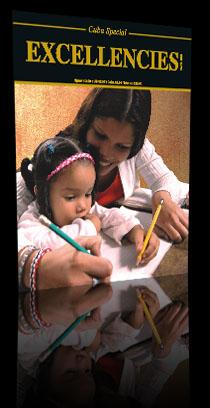Caribbean Heat at the Fire Fiesta
Not even when the Devil burns in a huge stake standing upright across from the Caribbean Sea and the region’s largest party comes to a close, the thumping beat of drums stops in Santiago de Cuba.
The sound of the cowhide wafts around for forever more as a backdrop for the memories, and people will continue hearing those drums until after they have come back to their own countries and daily lives.
Each year –like a purifying fountain- the trailblazing fire leads the way to the Caribbean Festival or Fire Fiesta at its permanent venue in Santiago de Cuba, the island nation’s second-largest city some 546 miles east of Havana.
Founded in 1982 under the name of Festival of Caribbean-Origin Culture and as a common denominator among nations that share common social, cultural, artistic and intellectual roots, the celebration has come apart at the seams and knocked down all barriers of language, history, traditions and customs.
Each and every fiesta displays an assortment of races, languages, folklore, dancing and singing not only from the Caribbean and Latin America, but also from the U.S., South America, Africa, Europe and Asia.
The party is indeed an overwhelming expression of the decolonizing sense of cultural values shared by these peoples at a time when the expanding dominance of the big powers is all the rage everywhere.
The traditional opening ceremony with the Parade of the Snakes down the streets of the 450-plus-year-old city of Santiago de Cuba is a showcase of the colorfulness and beauty of a Diaspora that converges in the Caribbean Sea.
The Caribbean’s nonmaterial heritage is well protected on this large island with each edition of the Fire Fiesta, resembling the lonely march of a pilgrim down the streets as he carries all the magic of the local ancestors in his hands and his heart.
No wonder the largest burg of eastern Cuba, founded over 490 years ago by Spanish Governor Diego Velazquez and home to a number of World Heritage sites, is nicknamed the Cultural Capital of the Caribbean.
During its eighth edition, the regional frolic was recognized as the Caribbean Festival, only to be called a few years later as just the Fire Fiesta.
In addition, the event is the right moment for theoretical chats about a variety of topics related to the culture of the Caribbean peoples. Debates usually spin around history, cultural values, identity, intra-Caribbean relationships, hegemony, integration and modernity.
Planners also organize workshops on popular religiousness, music, poetry, the performing arts and oral narration. Truckloads of handicrafts made with natural elements are displayed, and so are indigenous garments and the cultural diversity of the nations. And journalists have their own international powwow as well.
The Fire Fiesta goes hand in hand with huge outdoor spaces since thirty-something public places –including parks and avenues- become makeshift stages for musical bands, dancing companies and theatrical presentations.
People kick up their heels until total exhaustion and you overhear the same words uttered in a variety of languages and tongues. Dominicans, Martinicans, Haitians, Mexicans, Venezuelans, Ecuadorians, Japanese, Angolans, Frenchmen and people from everywhere under the sun huddle here to have fun and dance the night away.
The festival also holds its own in the fine arts and literature, especially among artists and writers from the Caribbean and Latin America. Pictures exhibited in art galleries are the most sought-after attractions among locals and foreign visitors alike.
Despite the sweltering heat –over 30 degrees Celsius- people are in sync with the festival’s dynamism, and swarm over all the activities and performances the city has to offer for the occasion, from the big-time shows at the majestic Heredia Theater to the jam sessions of traditional musicians at the Concert Hall.
For nearly a decade, trade and fun seem to hit it off in summertime with the Expo Caribe Fair, penciled in as the second-biggest business marketplace in the region, trailing just behind the International Trade Fair in Havana.
Also in July, the high-pitched sound of the Chinese flute hails the grand opening of the Santiago de Cuba Carnivals, a celebration that usually serves as the Fire Fiesta closer, luring tourists from every nook and cranny of the planet.
As an additional allure for attendants, each yearly party holds a magical-religious ceremony across from the Monument of the Runaway Slave, perched on one of the steepest knolls of El Cobre village, nearly five miles from the city of Santiago de Cuba.
The monument was created by well-known Cuban sculptor Alberto Lescay Merencio and represents the culture of the runaway slave and the struggle of the Caribbean peoples.
The emblematic monument stands tall a few dozen yards from the National Sanctuary of the Virgin of Charity –the saint patron of Cuba- at El Cobre, a place that has panned out to be one of the most popular sightseeing spots among travelers from the whole wide world.
Though the 2006 Caribbean Festival –its 26th edition came to an end recently- was dedicated to the CARICOM member states and regional integration, organizers announced that next year’s big bash will pay tribute to the Dominican Republic, whose representatives are already bearing the mpaka –the Fire Fiesta’s standard- that was handed over to them at the closing ceremony.
As Cuba’s Minister of Culture Abel Prieto put it, “this get-together of the peoples is the only event in which theoretical and academic reflections go beyond the meeting halls and land on the plazas and streets of the city to become everybody’s celebration.”
That’s why each year the Devil will be once again burned in the streets of Santiago de Cuba. The snake –a magical and religious token for many Caribbean cultures- will slither is way down the avenues, and the fire –another indispensable element for a number of aboriginal civilizations- will rekindle a celebration to the beat of the drums that will be definitely engraved in the memory of those who will have the peerless opportunity of joining the Fire Fiesta.


































